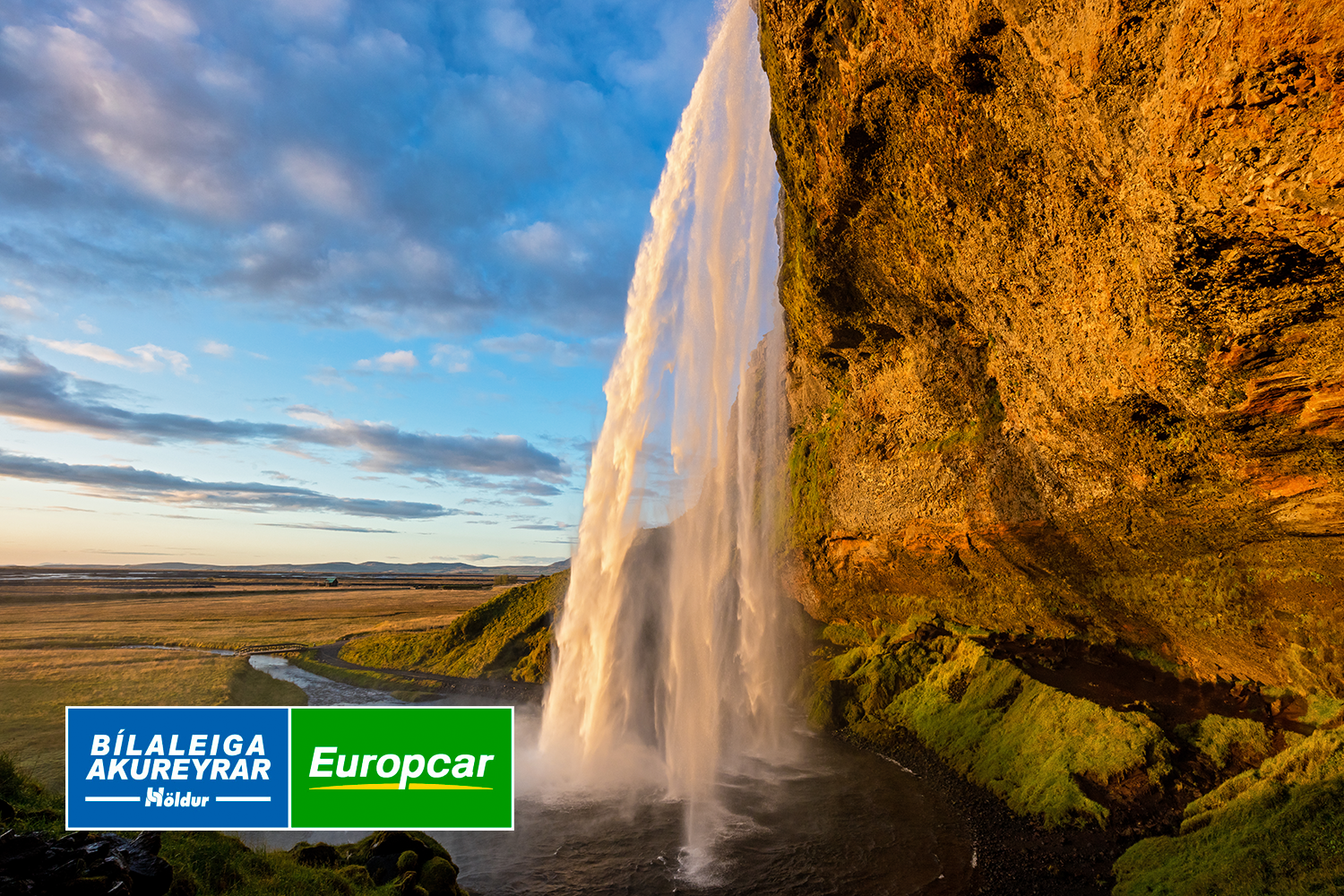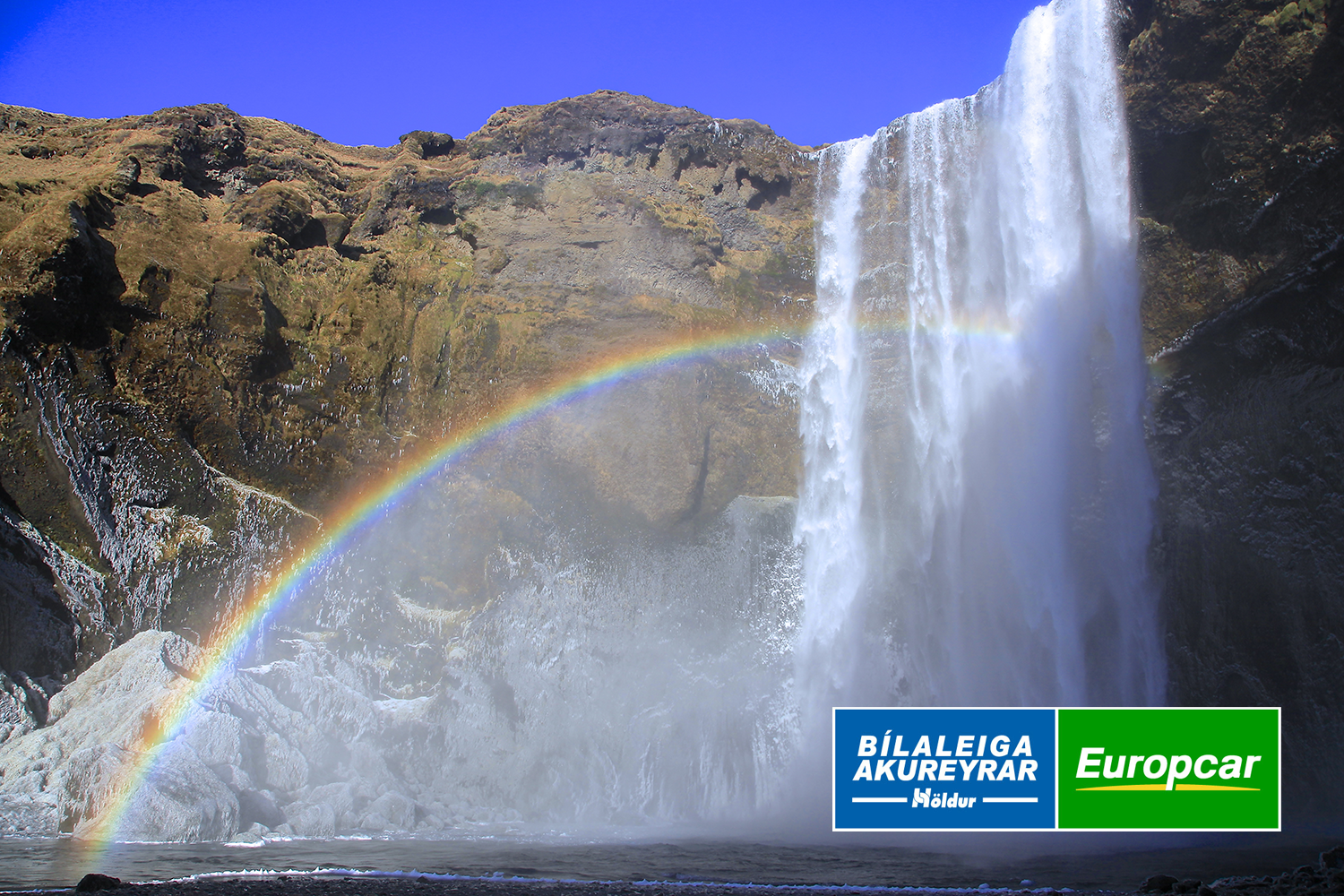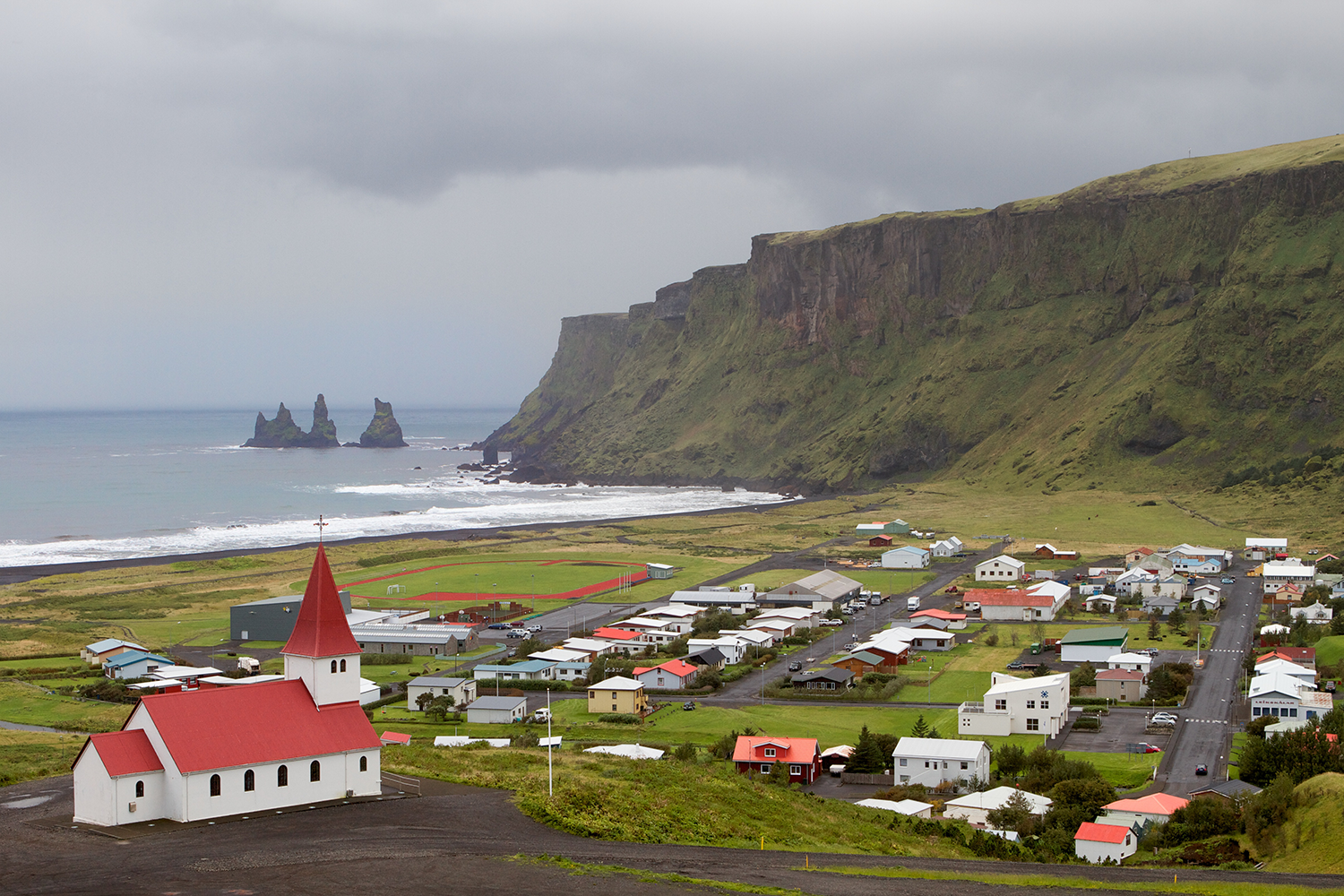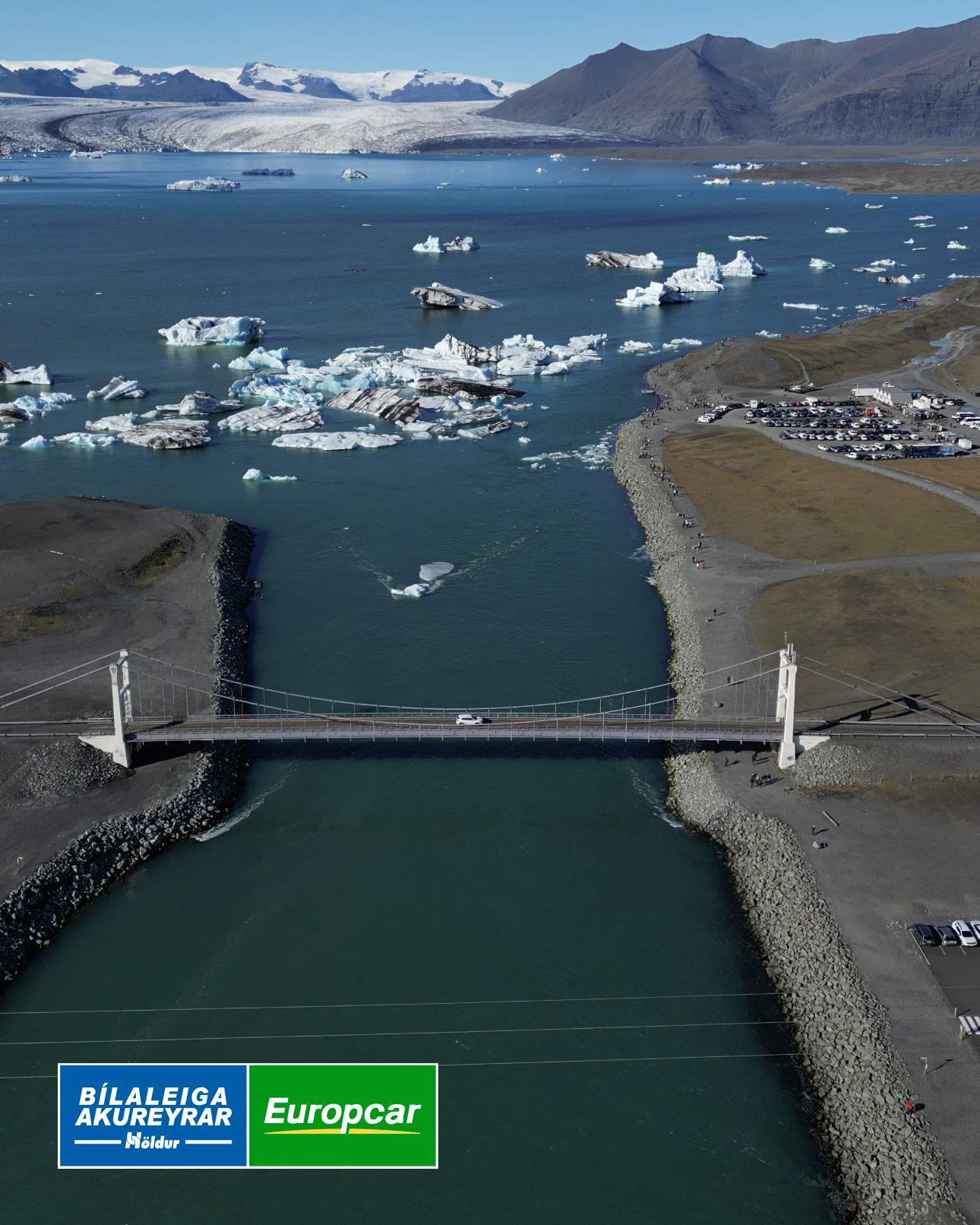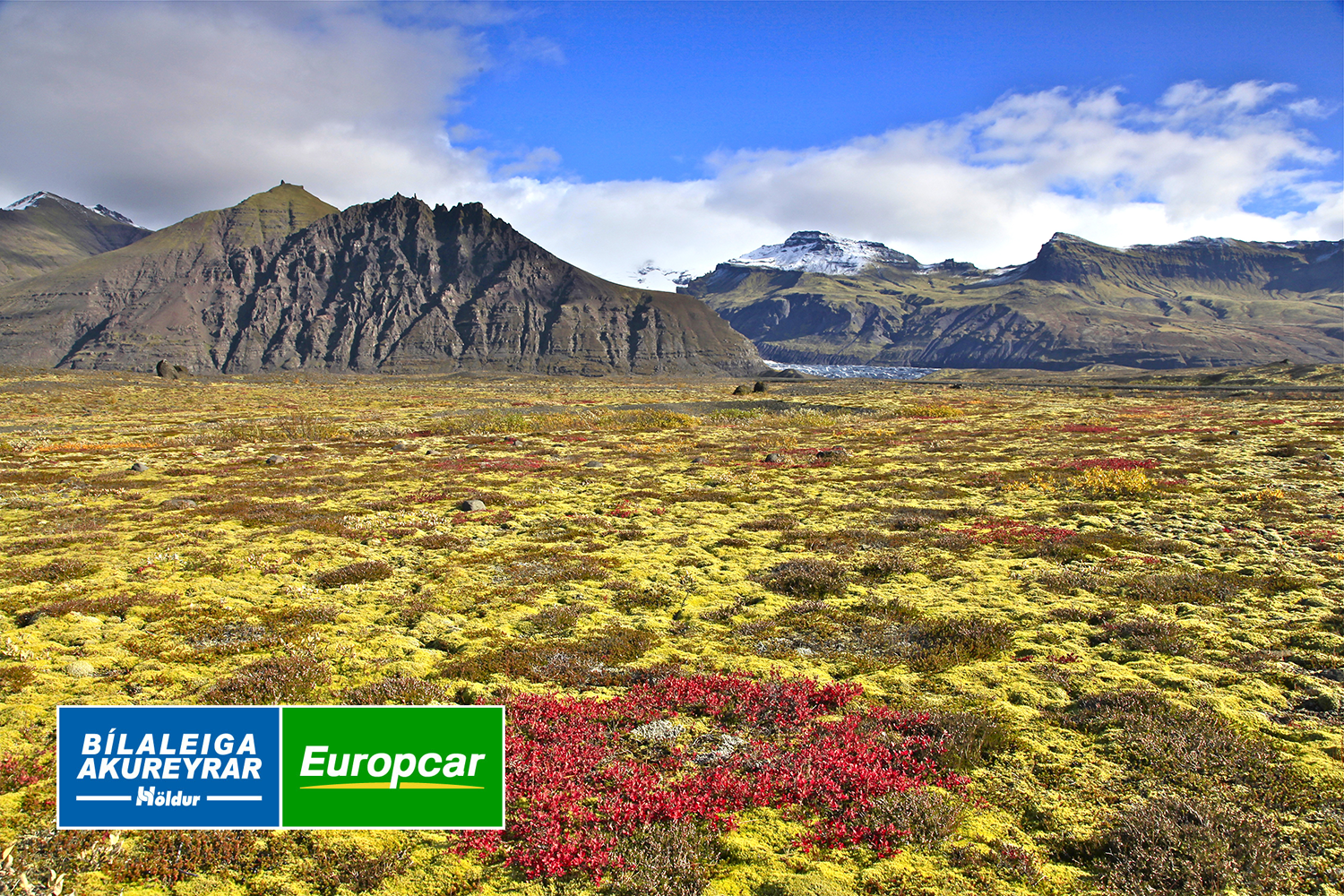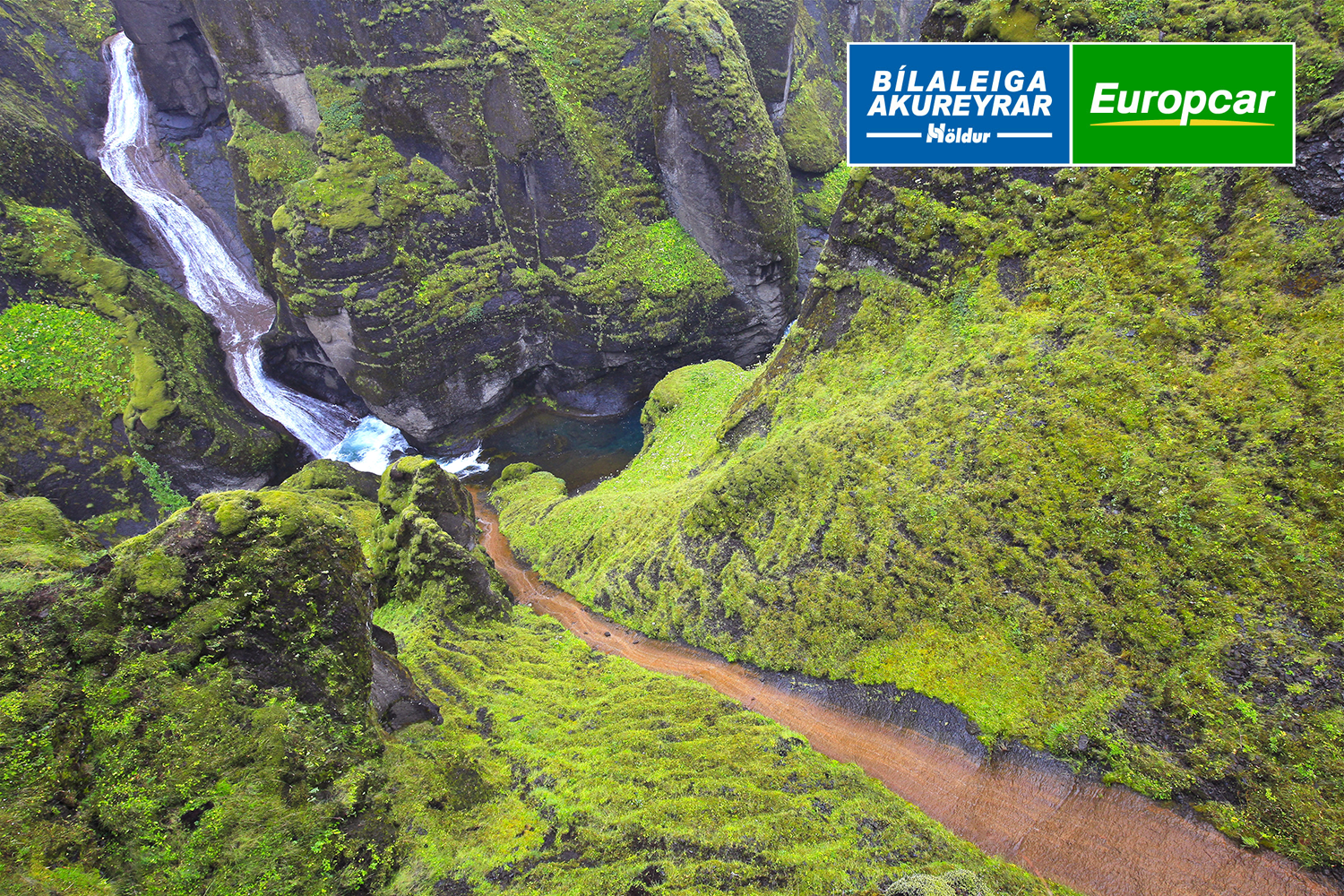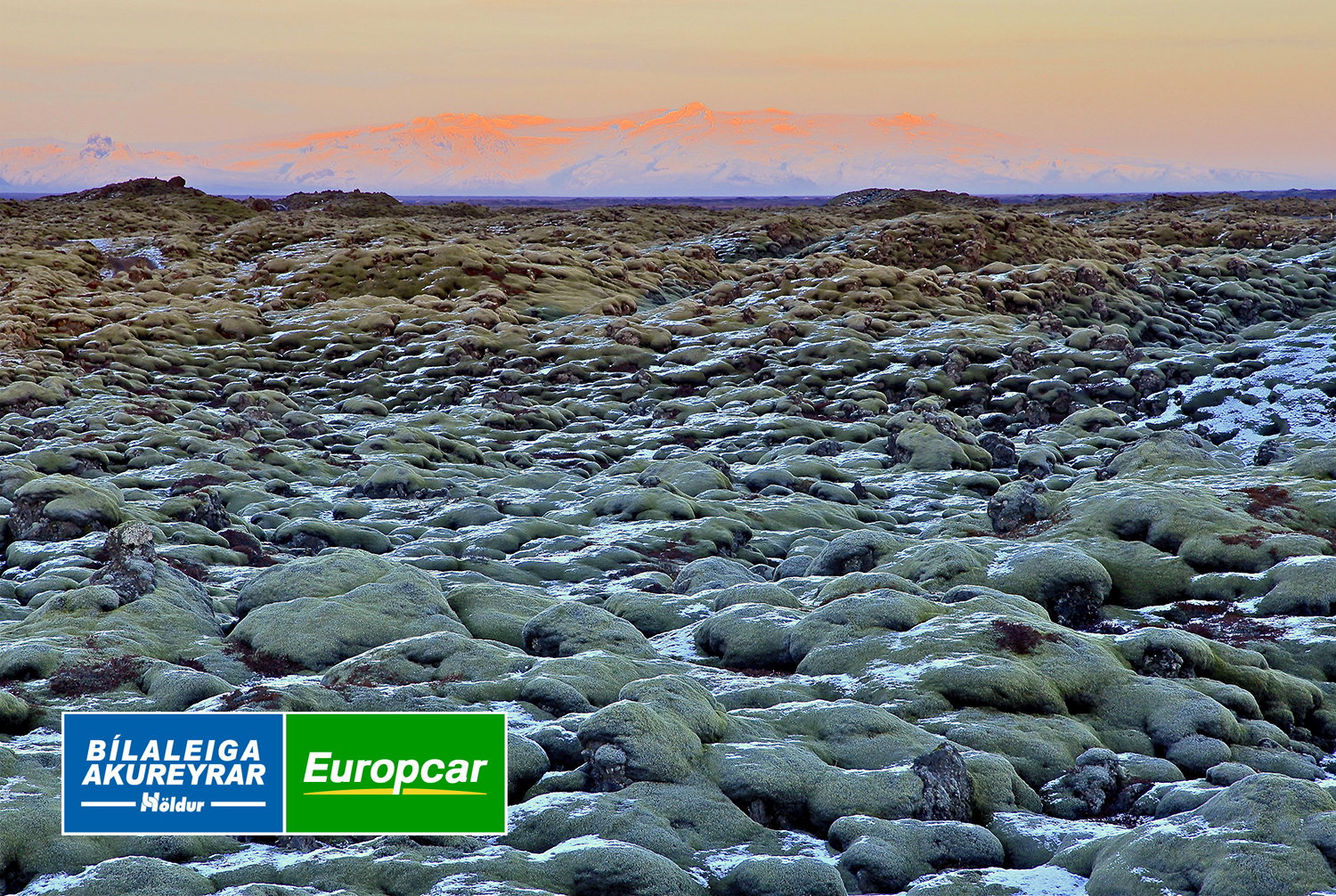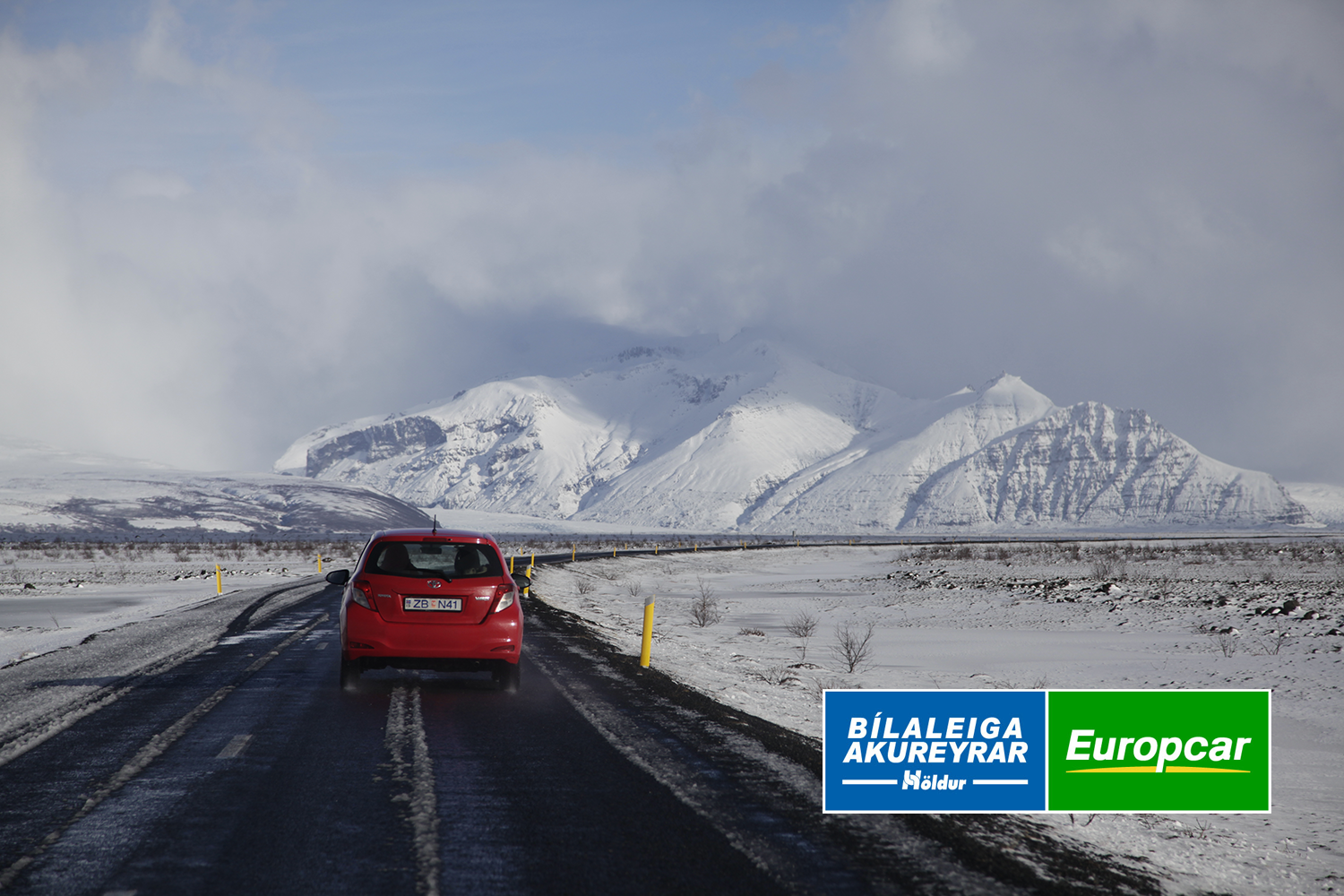- Vehicle Guide
- Driving in Iceland
- Our services
- Locations & Hours
- Travel Inspiration
- South Iceland: A complete guide
- Reynisfjara Beach in Iceland - Your Guide to a Safe Visit
- North Iceland: A Complete Guide for Drivers
- East Iceland A Complete Guide for Drivers
- West Iceland The Complete Driver’s Guide
- Your Ultimate Guide to Exploring Iceland’s Ring Road
- Driving the Diamond Circle in Iceland: Your Ultimate Guide
- Driving Iceland's Golden Circle: Your Ultimate Guide
- A 10-Day Itinerary in Iceland: Tips + Ideas
- The Perfect Itinerary for 7 Days in Iceland
- The Best Time to See the Northern Lights in Iceland with a Rental Car
- Renting a Camper in Iceland: The Complete Guide
- Getting to Iceland: A Comprehensive Guide on How to Reach the Land of Fire and Ice
- Nature Bath Locations in Iceland: A Complete Guide
- Iceland with Kids: A 5-Day Self-Drive Itinerary
- Winter Driving in Iceland: A Comprehensive Overview for Foreign Tourists
- The Total Solar Eclipse in Iceland – August 12, 2026
- Exploring Iceland's National Parks on a Self-Drive Adventure
- Exploring Iceland's Wonders: A Comprehensive Guide to Activities and Car Rentals
- Springtime in Iceland – Your Comprehensive Travel Guide
- Exploring Iceland's Most Popular Highland Routes
- The Pearls of Westfjords: The Ultimate Guide
- Exploring Iceland's Hidden Gems | Off-the-Beaten-Path Adventures
- Driving in Iceland in June: Tips for a Safe and Scenic Summer Road Trip
- Driving in Iceland in July: Tips, Routes & Rentals
- Driving in Iceland in August: Late-Summer Freedom on the Open Road
- Guide to Skaftafell Iceland Self-Drive A Journey Through Fire and Ice
- Eco-Friendly Road Trips in Iceland, Sustainable Travel Tips
- Photographer’s Paradise Top Scenic Drives in Iceland for Stunning Shots
- Iceland's Folklore and Legends A Road Trip Through Mythical Sites
- Iceland’s Midnight Sun and How to Make the Most of 24-Hour Daylight
- Chasing Waterfalls: A Road Trip to Iceland’s Most Spectacular Cascades
- Iceland's Volcanic Wonders: A Self-Drive Tour of Active and Dormant Volcanoes
- Tee Off in the Land of Fire and Ice: A Guide to Golfing in Iceland
- Birdwatching in Iceland: Puffins and Beyond
- Iceland’s Diverse Beaches: Beyond the Black Sands
- Icelandic Horses: The Unique Breed of the North
- Beyond the Ring Road: Iceland’s Hidden Scenic Drives
- Iceland’s Ice Caves: A Year-Round Adventure
- Wildlife Watching in Iceland: Where and When to Go
- Iceland’s Hidden Hot Springs: A Self-Drive Guide to Secret Soaks
- Navigating Iceland’s Weather: What to Expect Each Season
- Tröllaskagi Peninsula: Iceland’s Mountainous Marvel — A Scenic Road Trip with Höldur
- Mastering Iceland's Roundabouts: A Driver’s Guide
- Essential Tips for Renting a Car in Iceland
- Navigating Iceland’s One-Lane Bridges: Your Guide to Safe and Scenic Crossings
- Exploring Iceland’s Film Locations by Rental Car
- 5 Must-Visit Destinations Within Two Hours of Keflavík Airport
- Seasonal Car Rental Tips for Iceland’s Summer Festivals
- Understanding Iceland's F-Roads: How to Drive Safely Into the Highlands
- What Makes Iceland Unique: Top 15 Highlights for an Unforgettable Journey
- Driving and Hiking in Harmony: Explore Iceland's Natural Wonders with Höldur Car Rental
- What is the Best Car to Rent in Iceland?
- Avoiding Common Car Rental Mistakes in Iceland
- Making Your Car Rental in Iceland Child-Friendly: Tips for Stress-Free Family Travel
- Exploring Akureyri, Iceland’s Northern Gem, with EasyJet and Europcar
- Renting a Manual or Automatic Car in Iceland
- Discover the Arctic Coast Way in Iceland with Höldur Car Rental
- How to Save on Fuel Costs During Your Iceland Road Trip
- Electric vs. 4x4 Rentals in Iceland: Which is Right for Your Trip?
- Top Scenic Detours Off Iceland's Ring Road
- Top Safety Tips for First-Time Drivers on Iceland’s Roads
- Cultural Pit Stops Along Iceland’s Ring Road
- Your Guide to Exploring Stuðlagil Canyon by Car: Iceland’s Basalt Beauty Awaits
- Day Trip Ideas From Reykjavik by Rental Car
- Visit Glymur Waterfall: The Ultimate Self-Drive Adventure from Reykjavík
- Discover the Volcanic Wonders of Lake Mývatn by Car
- Discovering the Magic of Snæfellsnes Peninsula by Car
- Your Self‑Drive Guide to Gullfoss Waterfall
- A Guide to Seljalandsfoss Waterfall in Iceland: Explore by Car
- Exploring Reykjanes Peninsula A Self Drive Guide
- Exploring Iceland Landmannalaugar by 4x4
- A Beginner's Guide to River Crossings in Iceland
- Best Car Rental Offers for Iceland’s Summer Adventures
- Your Self‑Drive Guide to Þingvellir National Park
- Your Ultimate Guide to Geysir, Iceland: All You Need to Know
- How to Pay for the Vaðlaheiðargöng Tunnel
- Your Guide to Visiting Jökulsárlón Glacier Lagoon
- The Diamond Beach in Iceland: A Sparkling Wonder Worth Visiting
- Parking fines in Iceland: how to pay and what to do if you receive one
- Where to find overnight parking in Reykjavík: a local’s guide for travellers
- How to park for free in Reykjavík: tips to save on your Iceland trip
- How to pay for parking in Reykjavík - A friendly guide for drivers in Iceland
- Game of Thrones Filming Locations in Iceland: A Self-Drive Guide
- How to Choose the Right Car Rental at Keflavík Airport
- Flying Within Iceland: Your Guide to Domestic Routes and Regional Airports
- Top 3 Must-See Attractions on Iceland's Golden Circle
- Hidden Gems Along the Golden Circle Route
- Your Essential Guide to Iceland: Currency, Culture, and Car Rental Tips
- How to Plan the Perfect Golden Circle Self-Drive Tour
- The Comprehensive Guide to Rental Car Sizes at Keflavik Airport
- Húsafell & Hallmundarhraun: Hidden Lava Field Adventures by Car
- Iceland Weather by Month: What to Expect and How to Drive Safely with Holdur Car Rental
- A Guide to Iceland’s Quirky Roadside Attractions
- Exploring Iceland’s Lava Tubes | Self-Drive Cave Adventures with Höldur Car Rental
- Coolcation in Iceland: Self-Drive Your Summer Escape to the North
- Driving Iceland’s Coastal Roads: A Guide to Lesser-Known Peninsulas
- Top Tips for Driving in Iceland Safely Year-Round
- The Best Rest Stops and Viewpoints Along Iceland's Ring Road
- Driving in Iceland in September: Embrace the Autumn Adventure
- Your Guide to Exploring Fjaðrárgljúfur – South Iceland’s Fairytale Canyon
- Explore Reykholt on a Self-Drive Tour in Iceland
- How to Choose the Right Insurance for Your Iceland Car Rental
- Hiking Múlagljúfur Canyon: Iceland’s Hidden Gem You Can’t Miss
- Understanding Iceland's Weather and How It Affects Driving Conditions
- Dyrhólaey: A Complete Self-Drive Guide to Iceland's Breathtaking South Coast
- Where to See Iceland’s Tectonic Plates Up Close
- Scenic Journey on Kjalvegur Road 35 Reykjavik to Akureyri
- Guide to Visiting Svartifoss with a Rental Car
- Kerið Crater Lake in Iceland: A Self-Drive Guide
- Your Complete Guide to Stokksnes, Iceland with a Rental Car
- Hengifoss Waterfall in Iceland: The Ultimate Self-Drive Guide
- Your Complete Guide to Visiting Skógafoss Waterfall with a Rental Car
- Into the Heart of Þórsmörk: Iceland’s Valley of Thunder
- Dynjandi Waterfall in Iceland: The Ultimate Self-Drive Guide
- Visiting Ásbyrgi Canyon in North Iceland by Car: A Complete Self-Drive Guide
- Driving in Iceland in October: Embrace the Autumn Transition

Iceland Attractions, Travel information
South Iceland: A Complete Guide
12.07.2024
Visit South Iceland to discover glacial lagoons, snow-capped volcanoes, and miraculous waterfalls. Hire a car and explore one of Iceland’s most dramatic and iconic regions for yourself.
By far the best way to tour the south coast of Iceland is in a rental vehicle and, in this guide, you’ll discover why. Plus, we share some advice to get the best out of your trip, including what to see, driving tips, and more.
- Prepare for your self-drive tour with our guide to driving in Iceland
Why choose South Iceland for your self-drive adventure?
From its natural wonders to its thrilling Viking history, there are many good reasons to visit South Iceland. Here, we share four reasons why this region should be on your Icelandic road trip itinerary.
- South Iceland is home to some of the most iconic sights in the Land of Fire and Ice. With the elegant Seljalandsfoss and Skógafoss waterfalls, the must-visit Golden Circle, the jaw-dropping Mýrdalsjökull glacier, and much, much more, South Iceland hosts many of the country’s top sights. It’s a region that’s not to be missed.
- South Iceland is at the heart of Iceland’s Viking history. Iceland was one of the last land masses ever to be settled by humans and in the ninth century the Vikings made the south coast one of their first homes. Visit Þingvellir National Park, for instance, to see the site of Iceland’s original parliament, the Alþingi.
- South Iceland is easily accessible from the capital, Reykjavík. Hire a car in the capital (or directly from Keflavík International Airport) and you can be driving along the south coast in about an hour. Overall, it’s one of Iceland’s most accessible regions.
- South Iceland has many eating and sleeping opportunities for visitors (but it’s still easy to get off the beaten track). As one of the most-visited regions in the country, you’ll find everything you need for a rewarding stay.
Explore our range of vehicles to start planning your trip.
9 must-see attractions in South Iceland
So, where should you visit on your road trip in South Iceland? While there’s so much to see, don’t miss these nine highlights.
Below, you’ll find a map of the region to help you find these top sights.
1. Seljalandsfoss
Iceland’s waterfalls are nearly as famous as its glaciers and volcanoes. Of all these breathtaking sights, there are few that are as memorable as Seljalandsfoss.
Seljalandsfoss is an elegant stream of water that falls 60 metres (200 feet) over a rugged cliff. But what makes it stand out from Iceland’s many other waterfalls is that you can walk behind its cascade. Put on a waterproof jacket and head into the cave behind the torrent, to gaze out into the green pastures beyond.
The water you’re looking through is part of the river Seljalandsá, which flows down from the Eyjafjallajökull glacier.
2. Skógafoss
Another of South Iceland’s most impressive waterfalls, Skógafoss is just a few kilometres west of Seljalandsfoss. While it’s roughly the same size, it’s very different in shape and atmosphere.
Skógafoss is a vast curtain of water whose origins are in the Mýrdalsjökull glacier. Walk the short distance up the riverside trail to see it tumble into a cliff-flanked pool. You’ll hear the thunderous roar of water as you approach.
3. Vík í Mýrdal, Reynisfjara, and Dyrhólaey
One of the main hubs for travellers along Iceland’s south coast is Vík í Mýrdal. Built on the slopes overlooking the North Atlantic Ocean, the village often referred to as Vík is welcoming, well-equipped, and in a simply stunning location.
In either direction, the coastline here is shaped by dramatic cliffs and strange rock formations. Between the village and the sea, for instance, you’ll find Víkurfjara, the local black-sand beach.
Don’t miss Reynisfjara, a short distance to the west of Vík. To get to this beach, you can follow a well-marked trail across the cliffs from the village. With its captivating basalt cliffs, it’s a unique and unforgettable sight.
Plus, a short drive to the west takes you to Dyrhólaey lighthouse and Kirkjufjara beach too. It’s a stunning continuation of black-sand beaches and cliffs topped with a lighthouse.
4. Jökulsárlón glacier lagoon
Jökulsárlón is a glacial lagoon, scattered with broken icebergs and often visited by seals and other sea life. Frequently referred to as the “jewel” of Iceland’s south coast, it’s an exceptionally beautiful place.
This evocative lagoon hasn’t always been here. Rather, the waters on which the icebergs float used to be part of the mighty Vatnajökull glacier, the largest ice cap in Iceland. However, as global temperatures have risen, the ice is melting fast—and Jökulsárlón continues to grow.
Across the Ring Road—Route 1, which borders the lagoon—you’ll find the equally memorable Diamond Beach. It gets its name from the shards of ice that wash up on its black sands.
5. Skaftafell
For any outdoors enthusiast visiting Iceland, Skaftafell is a paradise. It’s a green wilderness surrounded by glaciers and criss-crossed by many kilometres of hiking trails.
One top destination for a hike in Skaftafell is Svartifoss waterfall, whose torrent is framed by strange geometric columns. If you’ve been to Reykjavík, you may recognise it already—as it inspired the design of the capital’s iconic Hallgrímskirkja church.
Skaftafell was once a national park of its own. But it’s since been incorporated into the larger Vatnajökull National Park, which extends over 8,000 square km (3,000 sq. mi). You won’t miss the bulk of white glaciers—including Iceland’s highest peak, Hvannadalshnúkur—as you drive along the south coast.
Read more about Skaftafell here: Guide to Skaftafell Iceland Self-Drive: A Journey Through Fire and Ice
6. Fjaðrárgljúfur canyon
Carving through the pastures of southern Iceland is the ancient canyon of Fjaðrárgljúfur. Between deep, rugged cliffs you’ll find the winding Fjaðrá river, which flows out to sea just a short distance away.
Walk the paths that overlook this dramatic river. And, if you’re brave, pose for a photo on the narrow ridges and spires.
Please respect the signs and any instructions from local rangers while you’re here. This is a delicate environment, and we want to ensure it stays beautiful for future generations.
7. Sólheimasandur
Black sand characterises much of the southern coast of Iceland. But there are few places as mysterious and evocative as Sólheimasandur.
Picture a vast plain of black sand, as far as the eye can see. Then, in the middle of this barren landscape, imagine the rusting husk of an aeroplane. It’s been here for 50 years, since it crashed due to challenging flying conditions.
Today, you can walk to the wreckage across the black-sand plain. It’s a landscape you’ll find in few other places on earth.
8. Eldhraun Lava field
Eldhraun holds the crown as the largest lava field in the world. This surreal, otherworldly landscape of petrified lava extends over 565 square km (220 square mi). Today, it’s covered in moss, which gives this landscape a soft and tranquil vibe.
Back in the 18th century, this place would have looked pretty different. But then, in 1784, the volcano known as Laki erupted. It didn’t stop spewing out lava for eight months and, by the time it had finished, the entire landscape was changed forever.
It’s a peaceful place today, and an insight into the processes that continue to shape our country.
9. The Golden Circle
While it’s not on the south coast of Iceland, the Golden Circle is regularly included in itineraries of South Iceland. This world-famous travel route is just a short distance outside of Reykjavík, and it can be completed in a day (although you can take longer if you’d like).
The Golden Circle is made up of three main sights:
- Þingvellir National Park. Iceland’s first national park is the historic location of the country’s original parliament. It’s amazing to think of Vikings standing in this rugged scene making laws and discussing politics.
On your trip, you can explore the hiking trails of the national park and visit the mighty lake Þingvallavatn. If you’re feeling adventurous, you can go snorkelling or scuba diving in the lake too. At Silfra, you’ll find one of the few places in the world where you can swim between tectonic plates.
- Gullfoss waterfall. While Skógafoss and Svartifoss are among the most beautiful, few other waterfalls in Iceland match Gullfoss for sheer power. Walk alongside its cacophonous torrent and marvel at the majesty of nature.
- Geysir geothermal area. The third stop on the Golden Circle is Geysir, an area of varied and fascinating geothermal phenomena. While the Great Geysir, which gives the area its name, is rarely active these days, don’t miss Strokkur. This geyser shoots jets of steam 20 metres (65 feet) into the air.
While these are the main sights in the Golden Circle, there’s more to see. Find out more in our guide to driving the Golden Circle.
Map of South Iceland
3 South Iceland itineraries to plan your trip
South Iceland is really easy to navigate and a dream to drive. So, it’s time to get out into the region and explore for yourself. Here are three suggestions for driving itineraries to suit your trip.
- 1 – 3 days: The Golden Circle and beyond. Typically, visitors to Iceland spend a day or two exploring the main attractions of the Golden Circle. But you could extend your trip further by taking in some of the lesser-known sights of the Golden Circle, such as the Friðheimar farm, the blue Brúarfoss waterfall, or the spa at Laugarvatn Fontana.
- 5 days: Reykjavík to Höfn and back again. Five days give you lots of time to experience South Iceland at your leisure. Spend a day exploring the Golden Circle before heading further west to see waterfalls, volcanoes, glaciers, and more. Great places to stay the night include Vík, Kirkjubæjarklaustur, or the fishing town of Höfn.
- 7 days or more. Beyond the South Coast. If you have more time, why not extend your trip to see more of Iceland? You can spend some time on Reykjanes peninsula, visit the Eastfjords of East Iceland, or even loop the entire Ring Road.
Any itinerary you do make to explore the Ring Road should be built with flexibility in mind. In Iceland, the weather changes frequently and can make particular destinations a little less attractive. Plus, you may want to give yourself to stop off spontaneously.
That’s the benefit of driving yourself—you have the freedom to make these decisions as you go.
Tips for a safe and comfortable self-drive tour in South Iceland
In South Iceland, glacial lagoons, black-sand beaches, and snow-capped volcanoes await. But to enjoy your self-drive tour of the region to the fullest, bear the following advice in mind.
1. Be aware of changing seasons and weather
In the centre of the North Atlantic Ocean, Iceland’s weather is volatile and often dramatic. Whenever you want to visit Iceland, it’s always worth checking and planning your trip around the weather forecast.
What’s the best time to visit South Iceland? It’s a region that’s hugely rewarding no matter what season you come.
In winter, you’ll have less predictable weather, with a strong chance of snow. But these months are the best time to see the northern lights, which illuminate the dark sky with bright extraterrestrial colours.
In summer, you can expect the weather to be more stable and drier. However, it’s still wise to bring a waterproof jacket!
The best advice we can give, no matter which season you’re travelling in, is to keep your plans flexible. If the weather turns bad, it can be unpleasant—and even dangerous—to drive long distances or visit remote areas.
Check the forecast at the Icelandic Met Office. And visit road.is to stay up to date about road conditions.
2. Plan for Iceland’s roads and changing conditions
Driving in Iceland throws up some challenges that you may not be used to back home. Aside from sheep in the road, one of the most important things to be aware of is the different types of road you’ll encounter:
- Paved roads. Main routes such as the Ring Road are paved and well-maintained. In some places, though, the road becomes single-track, with passing places. You’ll need to let any oncoming traffic pass if you have a passing place on your side.
- Unpaved and F-roads. In rural areas, when you come off the main roads, you’ll often have to drive on unpaved roads. These tend to be made of gravel—so it’s best to slow right down when you change surface.
Unpaved roads in the highlands are known as F-roads, and these aren’t maintained throughout the year. If you’re heading into the highlands, such as to Landmannalaugar, check that the road is open first. - Tunnels and tolls. There’s one toll road in Iceland, just outside of Akureyri. You’ll need to pay for this online within 24 hours of travel. You can find more information here.
3. Choose a vehicle that’s right for your plans
With Iceland’s varying conditions, you need a vehicle that can handle whatever you’re planning for your trip. That’s why at Höldur, we have a range of over 8,000 vehicles, so you can be sure you have the right vehicle for your South Iceland adventure:
- Passenger vehicles and estates. If you’re driving around town or just sticking to the Ring Road, standard cars (and family-sized estates) are an affordable, comfortable choice.
- Electric vehicles, for eco-conscious travellers. While they’ll take you to most places in South Iceland, you won’t be able to travel in the highlands with one.
- Motorhomes and campers. Hoping to stay out beneath the stars? Choose a motorhome or camper as a self-contained home for your trip.
- 4x4 SUVs. The reliable choice if you’re heading into the highlands, thanks to superior handling and more rugged design.
- Minivans. For those of you travelling in large groups, our range of minivans are a good choice too.
Overall, we have a range of vehicles to suit all budgets and travel plans. Explore our full range here.
4. Follow the rules to protect Iceland’s nature
Iceland is a wild, beautiful, and changing environment and our aim is to retain its beauty for future generations. That’s why we ask all of our visitors to follow some general good practice, so that everyone can enjoy Iceland together.
- Don’t drive off road. In Iceland, driving off road is illegal and your insurance won’t be valid if you’re discovered to have done so.
- Kindly do what rangers and signage asks you. For instance, if a certain natural attraction is closed, please don’t try to visit it anyway.
- Take only pictures and leave only footprints. Please don’t remove anything from Iceland’s landscape, or leave any litter behind.
- Only visit the outdoors if you’re experienced enough to do so. For your safety and that of the environment, please don’t try scuba diving, glacier hiking, or ice caving unless you know what you’re doing.
Let someone know where you’re going if you’re travelling alone. To stay safe in Iceland, it’s always best to share your plans with someone else.
FAQ
What are the must-see attractions in South Iceland?
South Iceland is full of jaw-dropping attractions, including:
- Jökulsárlón, the famed glacial lagoon
- Vatnajökull National Park, with its ice cap, hiking routes, and more
- Seljalandsfoss, Skógafoss, and Svartifoss, Iceland’s best-known waterfalls
- Vík and its black-sand coastline.
Hire a car with Höldur to see the best of Iceland’s south coast.
What to see on the south coast of Iceland?
The south coast of Iceland is best known for its black-sand beaches and vast glaciers. But there’s much more to see:
- Eldhraun, the largest lava field in the world
- Sólheimasandur, a black-sand desert with the mysterious wreckage of a plane
- Skaftafell, a nature reserve with many miles of hiking trails
- Fjaðrárgljúfur, a dramatic canyon with twisted cliffs and a surging river.
Is South Iceland worth it?
South Iceland is one of the most remarkable regions in all of the country. It has some of Iceland’s best-known and most rewarding sights. Plus, it’s really easy to access from the capital city of Reykjavík, which is another great reason to visit. Overall, it’s definitely worth a trip!
Is north or south Iceland better?
Both North Iceland and South Iceland have their charms. While in the south you’ll find attractions such as Jökulsárlón and the Golden Circle, North Iceland boasts the magical Lake Mývatn and the scenic Arctic Coast Way.
Why not hire a car and see both regions? Drive the Ring Road to explore the entire island of Iceland.
Where do you stop in South Iceland?
Drive the South Coast and you’ll find many places to stop overnight. Try any of the following villages and towns:
- Selfoss. The largest town in South Iceland, Selfoss has a substantial local population who give the town a warm, welcoming vibe.
- Vík í Mýrdal. With its stunning surroundings and great options for dining and accommodation, it’s a top place to stay in South Iceland.
- Kirkjubæjarklaustur. A hamlet of houses on the site of an ancient farm, it’s perfect for exploring Skaftafell and around.
How much does it cost to drive the south coast of Iceland?
While Iceland’s reputation for being an expensive country to travel in is probably deserved, there are ways to tour the south coast affordably. Just remember, you’ll need to account for the cost of your vehicle, food, accommodation, as well as the cost of any attractions.
You can save money on your trip by taking some simple steps. For instance, you can camp or stay in a hostel rather than in a hotel, or visit Iceland in the shoulder season—namely between March and May or between September and November.
What is the largest town in Southern Iceland?
The largest town in South Iceland is Selfoss. It has a population of about 9,000 and it’s the local centre of trade and work.
How long does it take to do the south coast of Iceland?
You can spend as long as you want exploring Iceland’s south coast. While some coach tours explore the region in a day or two, you can take it much more slowly if you hire a car. Four or five days, for instance, lets you dive deeply into the region.
Which coast of Iceland is best?
The entire coastline of Iceland deserves to be explored. Choose between:
- South Iceland. Perhaps the most famous of Iceland’s coasts, it promises a world of black-sand beaches and glacial lagoons, overlooked by high mountains.
- East Iceland. Defined by the rugged coast of the Eastfjords, East Iceland has much to discover.
- North Iceland. With its drier weather and dramatic coastline, North Iceland is an enduring favourite.
- West Iceland. Stretching north from Reykjavík to the Westfjords, West Iceland is diverse, dramatic, and hugely rewarding.
Can you do the south coast of Iceland in one day?
You can do Iceland’s south coast in a day, but you might be a little rushed. It’s a five-hour drive from Reykjavík to Jökulsárlón, which may be a bit too much time in the car for many travellers.
Instead, we recommend you spend three days or more exploring the region. With waterfalls, glacial lagoons, and more, there’s a lot to see!
Hire a car with Höldur to see South Iceland at its best
The best way to explore South Iceland is by car. Hire a vehicle with Höldur and discover the region at your leisure.
At Höldur, we’re the largest car rental operator in Iceland, as well as Iceland’s local Europcar franchisee. With over 8,000 vehicles in rotation, we can offer the ride—and the renowned service—you need for your trip.
Explore our range of vehicles to book your trip.

